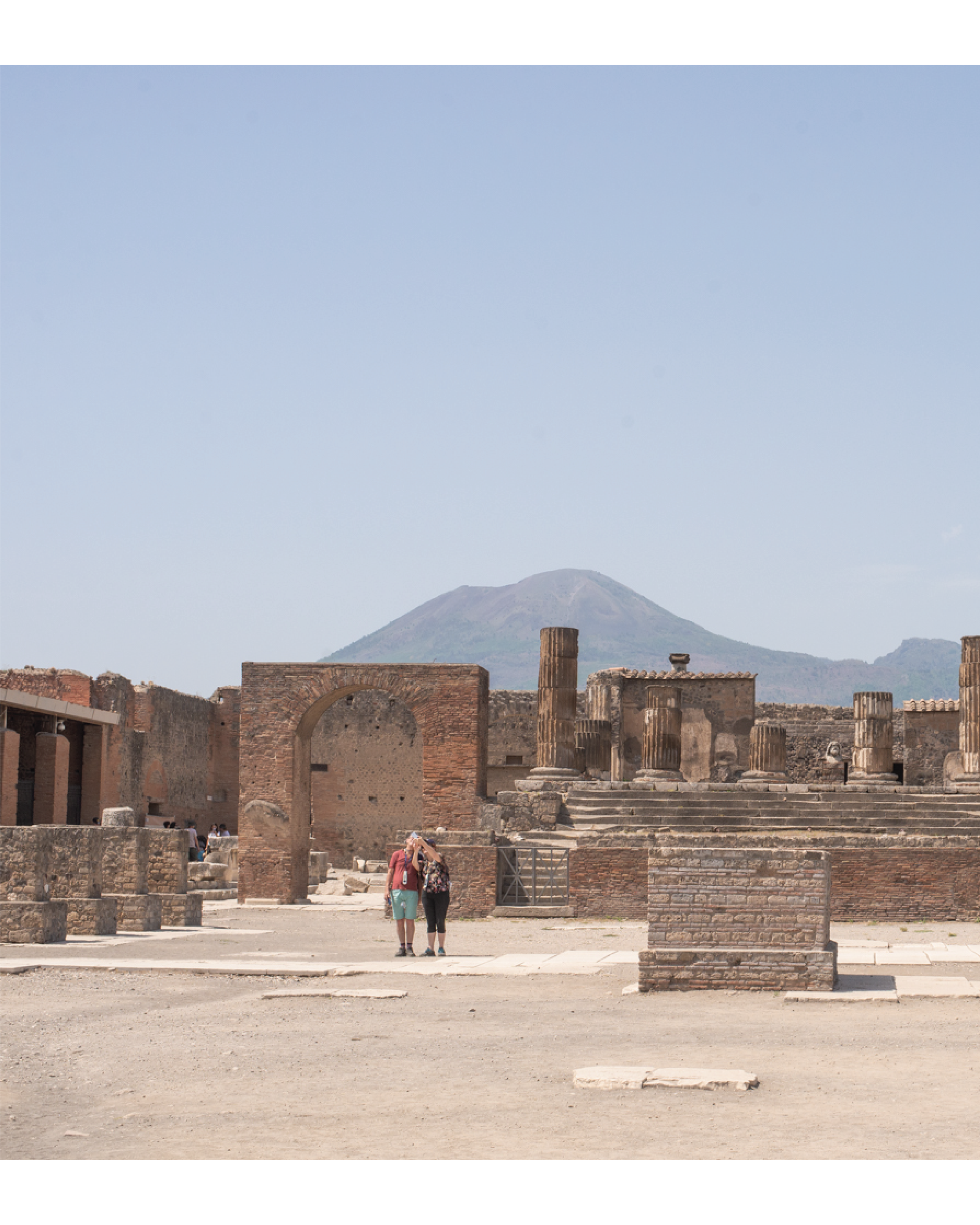ROME SKETCHES : POMPEI
I gazed into my tote and drew out the sepia ink well and collection of leftover paper towels to fill the fude during a lull in the lecture. I unscrew the pen and pull out the converter, lower it into the well and slowly draw out the ink. I wipe the outside and put the pen back together, a ritual well-practised at this point. I drop the ink back into the bottom of my bag, rustling around with the notebooks and watercolour set as it finds a comfortable position. I began to don a tote full of my essentials a few days ago: slightly impractical in size and comfort, yet a strong strategy for avoiding sweat in the noon-day summer sun. My writing and sketching pens in my pocket, my bag held the sketchbook and a few notebooks for the day, a copy of Mad Love, Breton a companion in this forest of symbols, and the ever-evolving collection of unused paper towels for wiping away ink and watercolour. To the straps I’d clip my Nalgene water bottle on a carabiner and on the back my Nikon camera. It was a burden most days, but after a few days it felt like my essential kit, dialled and ready for another tour.
Today I am alone, wandering the streets of Pompei. I’ve gotten used to seeing the ruins of large buildings, imagining them only as they sit, monuments surrounded by an unassuming baroque fabric or a blank field of stone pines – but to be enveloped in a new city at the scale of ancient times, forced to learn to navigate the novel gridded streets reminded me of learning Toronto’s downtown as a kid. Each turn is a new landmark which you situate yourself by, and slowly make the rounds.
The deep streets, once sewers because of the high bedrock, felt awkward, empty. The large cross-walk stepping stones protruding a foot high felt like a playground for tourists skipping along. I wander eastward and make my way from the amphitheatre to the theatre, deciding to make wrong turns on purpose, to leave the surely crowded forum to last, hoping for a moment of solitude between the gaggles of guided tours and run-ins with my colleagues.
As I pass the roofless remains of homes, I smell the sweet honey smell of Roman ruins. It is now a familiar scent and I keep wondering if it is a hidden flower somewhere in the brambles, but here there are only poppies scattered around the kitchen counters and built-in storage urns. The ghosts of families appear sitting in lamplight, fruit and meat hung to dry over the hearth, a wife at work tending the children, the man just home from a day in the senate, feeling the mud ground with his cleaned toes and watching. I step through these stories waiting to be told, each stop when I feel overwhelmed by one and I sit to take a photograph or do a small sketch imagining a wood roof or a cart in the muck, or the rain of ash which took the city from the land of the living, like an earthen Atlantis.
I pass the set of theatres and climb the stairs to the famed triangular acropolis. Ease pervades the air under the large oaks, tourists languidly perched on the remains of the temple’s podium. It is clear that this was a rich city’s place of calm. I come across Rick, uncharacteristically seated and resting, and inquire about the park: “Well, it’s really a place to rest between theatre shows. Theatre in Rome was a full-day ordeal where you’d break and the sala had food, and could come up here to relax between shows.” I thank him and leave him to rest as I still had the forum to find.
As I step through the archway I am blinded like Mersault on an Algerian beach, droves of people are passing around silhouetted stone remains as my eyes adjust to the long forum. I bounce left and right getting my bearings and reading labels, but I am drawn only to the view of Vesuvius overtop the ruined Temple of Jupiter. This axis is drawn straight from what was once the peak of the volcano, but now only points between the fragments of the mountain left after that fateful blast. Watching Vesuvius rise to center on the temple, as history would have it, split the columns at heights to mimic the natural form which brought the city’s demise – I must draw it.
I spot a good stone to sit on off-centre to the temple and decide to brave the summer sun. It occurs to me that for sake of stately order, these large open spaces are entirely unlivable for the better part of half a year, a gross miscalculation in southern Italy. But I sit anyway.
The quick sketches earlier tired me out, so I decided to be careful with this one, get it right. I slowly trace the shadows of the columns and stairs and pull the front texture through thin strokes as the wind blasts dust into my eyes. To balance the sketch on the page I add the arch passages on either side, then I dash in Vesuvius behind. A private tour of Americans stops by impressed and confused that I am sitting in the sun. I shake it off and pull out my watercolour set. The dust fills the paint set almost instantly, the ghosts circling the colours and guiding my hand. The orange and yellow come out perfectly, and compliment the green-yellow of the grassy volcano beyond. I thank the place and gaze down lovingly at the image. Flipping through the earlier pages, the memories of past moments flood back, and I realise I am improving, capturing more the spirit which I see in the stone before me.






















